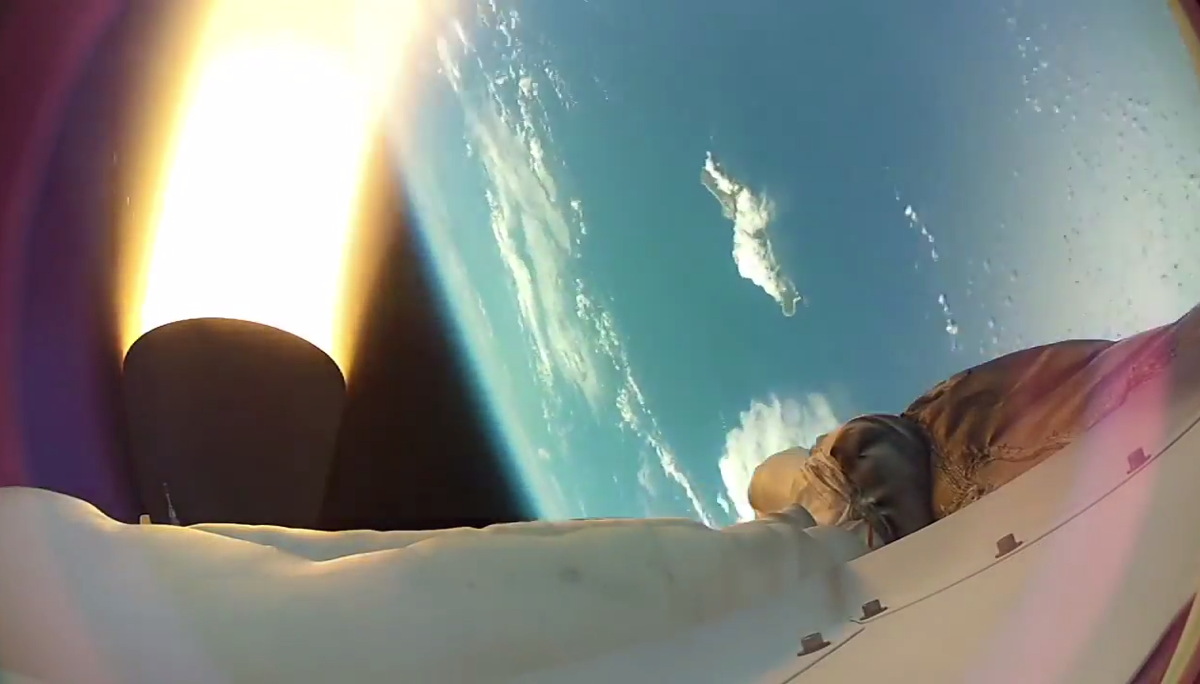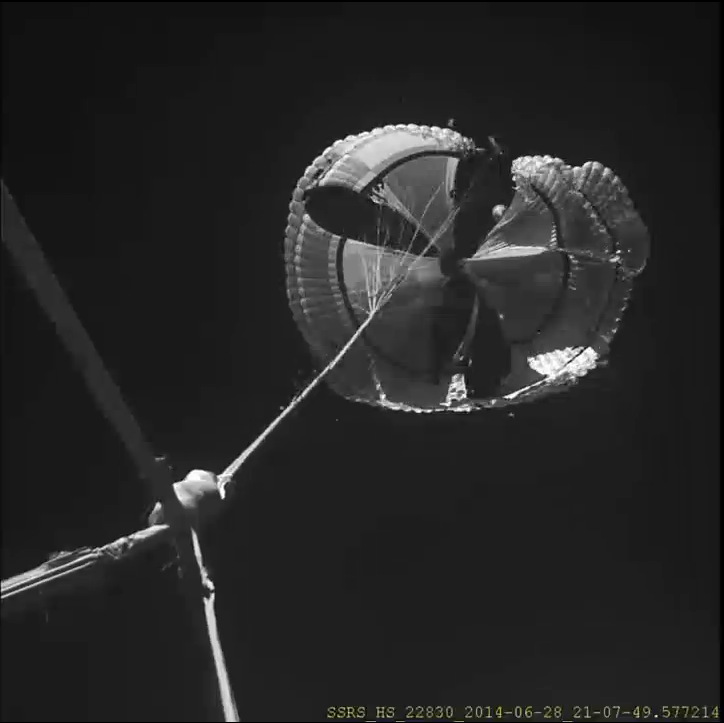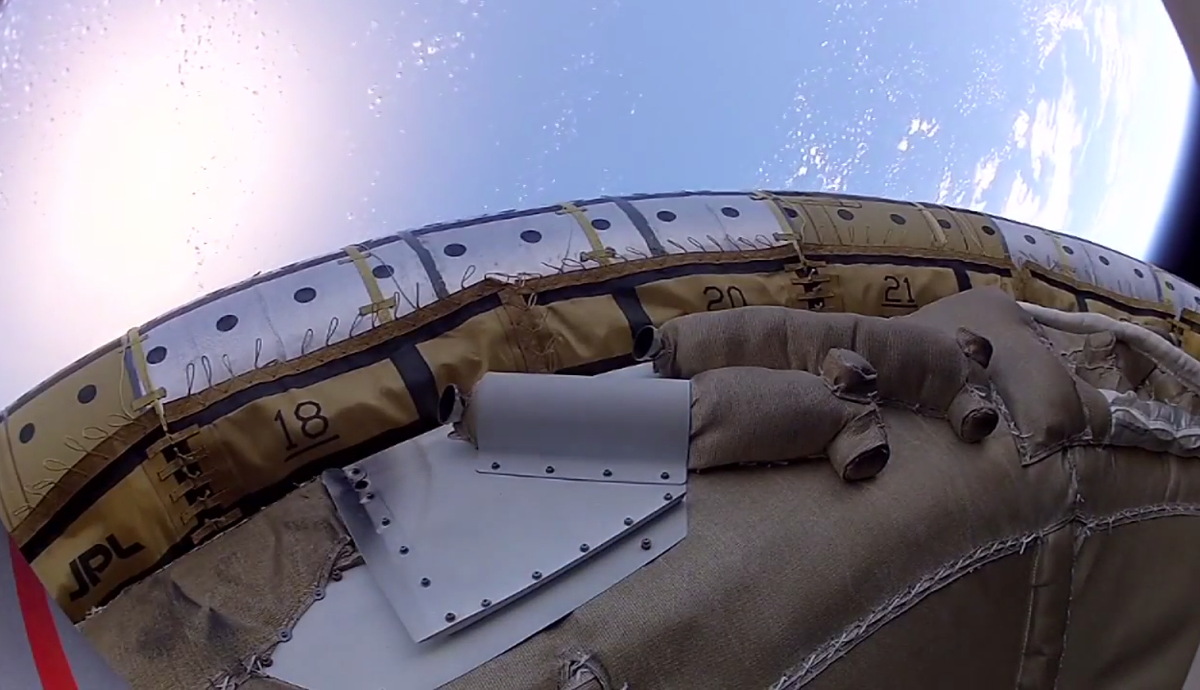Watch NASA's 'Flying Saucer' for Mars Go Supersonic in Amazing Video

An amazing new video from NASA shows the ups and downs of the first test of a flying saucer-shaped system that could one day help the space agency land huge spacecraft on Mars or other planets.
NASA launched the flying saucer test flight from Hawaii at the end of June to demonstrate a so-called Low-Density Supersonic Decelerator (LDSD), an inflatable system to help huge vehicles slow down during offworld landings. NASA's new flying saucer video, released Friday (Aug. 8), shows stunning, high-definition views of the flight.
For example, viewers can see the instant when the saucer-shaped supersonic inflatable aerodynamic decelerators (SIADs) inflated. The new video also gives a sharp view of the moment the LDSD's huge 100-foot-wide (30.5 meters) supersonic parachute ripped apart as it deployed when the craft was speeding at 2,500 mph (4,023 km/h). [NASA's Inflatable Flying Saucer for Mars Landings (Photos)]
"Our test vehicle performed as advertised," Ian Clark, principal investigator for LDSD, said in a statement. "The SIAD and ballute, which extracted the parachute, also performed beyond expectations. We also got significant insight into the fundamental physics of parachute inflation. We are literally rewriting the books on high-speed parachute operations, and we are doing it a year ahead of schedule."
The test was conducted on June 29, when the flying-saucer-shaped vehicle was towed 23 miles (37 kilometers) up to the edge of space by a balloon. Once the balloon released the craft, the LDSD's onboard motor roared to life, taking the craft up to more than four times the speed of sound and hurtling it even higher into the sky.
After the balloon release, the two SIADs inflated, slowing the LDSD down to Mach 2.5. One SIAD was 20 feet wide (6 m), and the other measured 26 feet (8 m) in diameter. According to analysis done by the LDSD engineers after the test, the SIADs performed very well.
Breaking space news, the latest updates on rocket launches, skywatching events and more!
Engineers wanted to test the vehicle in thin air because it functions as a good analog for Mars' atmosphere, Clark said during a news conference today (Aug. 8). It's possible that once the new technology is put through its paces, a version of the LDSD could help land human habitats and other large objects on Mars using a set of parachutes and SIADs.
"We've been developing a number of technologies as part of this project — technologies that will enable us to land payloads significantly larger than the Curiosity rover, land them in places on Mars that we've never been able to get to before and land them more accurately," Clark said.
Although the parachute didn't perform as expected, engineers working on the mission still consider the test a success. The chute failure helped engineers with the program learn more about what needs to be corrected during future tests.
"There's a lot of physics to this problem that we're now gaining new insights into that we've never had before, and we're learning more about what it takes to build parachutes this size that can be safely deployed at these conditions," Clark said. "We're going to take all of that knowledge and feed it back to our flights for next year."
NASA is planning to launch two more LDSD space technology tests in the summer of 2015.
Follow Miriam Kramer @mirikramer and Google+. Follow us @Spacedotcom, Facebook and Google+. Original article on Space.com.

Miriam Kramer joined Space.com as a Staff Writer in December 2012. Since then, she has floated in weightlessness on a zero-gravity flight, felt the pull of 4-Gs in a trainer aircraft and watched rockets soar into space from Florida and Virginia. She also served as Space.com's lead space entertainment reporter, and enjoys all aspects of space news, astronomy and commercial spaceflight. Miriam has also presented space stories during live interviews with Fox News and other TV and radio outlets. She originally hails from Knoxville, Tennessee where she and her family would take trips to dark spots on the outskirts of town to watch meteor showers every year. She loves to travel and one day hopes to see the northern lights in person. Miriam is currently a space reporter with Axios, writing the Axios Space newsletter. You can follow Miriam on Twitter.


